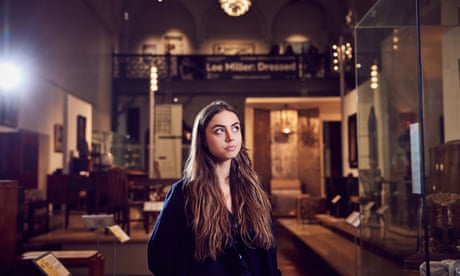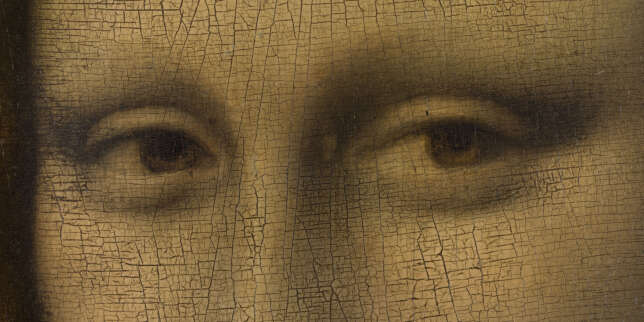The Nightwatch
2004 - Film & Video (Film & Video)
17 min
Francis Alÿs
The Nightwatch , which is an ironic reference to the celebrated painting by Rembrandt, follows the course of a fox wandering among the celebrated collections of the National Portrait Gallery in London. The path of the fox, from galleries containing 16th, 17th and 18th century portraits of historic figures from British history hung on plush walls, is circuitous and seemingly random. The fox tracks back and forth, sometimes inspecting the gallery furniture, often walking through the middle of the room but sometimes around its perimeter until eventually it climbs on top of a showcase, covered in fabric where he settles down to sleep. The actions of the fox are observed from the close-circuit television cameras which form part of the museum’s security system. Foxes are now commonly found in London roaming the suburban streets at night-time. They are in a sense flaneurs sauvages. The insertion of a fox in such an august institution is at once bizarre and yet in some sense perfectly normal. There is a constant tension in the film: will the fox do some damage, what attracts him to particualr places that he returns to; how does he decide where he will settle. The fox acculturises to the gallery in the same way he has become acclimatised to the city. The fox is an outsider, an interloper banned from the city that has re-inserted itself. Alys draws a parallel between the fox and himself. ‘No matter how long I have been away, I have one foot in a European culture, and one foot out… A lot of my work has played on the double status’. The theme of surveillance is multi-layered. On the one hand the fox is staking out the gallery; the portraits on the wall appear to be watching him; the security cameras are monitoring both the paintings and the fox and finally, we the viewer are observing the whole action.
Trained as an architect, Alÿs turned to a visual arts based practice in the early 1990s as a more immediate, direct, and effective way of exploring issues related to urbanization, to the ordering and signification of urban space and to the semiotics of its use. His work initiates with a simple action, either by him or others, which is then documented in a range of media. Alÿs explores subjects such as modernizing programs in Latin America and border zones in areas of conflict, often asking about the relevance of poetic acts in politicized situations. Documentation is central to his practice as well as painting, drawing, and video. In his work, When Faith Moves Mountains (2002) made in collaboration with Mexican critic Cuauhtemoc Medina, Alÿs recruited 500 volunteers outside of Lima, Peru. Each person moved a shovel full of sand one step at a time form one side of a dune to the other, and together they moved the entire geographical location of the dune by a few inches. Critic Jean Fisher linked Alÿs’ work to the radical event of precipitating a crisis of meaning, where the exposure of a void of meaning is confronted by its social situation, leading up to some kind of truth. Francis Alÿs was born in Belgium in 1959. He lives and works in Mexico City.
Colors:
Related works sharing similar palette

© » LENS CULTURE
In Pieces - Photographs by Sophia Bulgakova, Lia Dostlieva, Ola Lanko, Katia Motyleva and Kateryna Snizhko | Book review by Sophie Wright | LensCulture Feature In Pieces In this imaginative collection of photobooks “made with a child in mind,” five artists of Ukrainian descent explore the everyday heroism of life in wartime...

© » THEARTNEWSPER
Under the bonnet: €300,000 Ferrari-funded restoration completed on 13th-century Cimabue fresco Art market Museums & heritage Exhibitions Books Podcasts Columns Technology Adventures with Van Gogh Search Search Conservation news Under the bonnet: €300,000 Ferrari-funded restoration completed on 13th-century Cimabue fresco Maestà di Assisi, located in the saint's home town, which survived a deadly earthquake in 1997, has been returned to its original luminosity James Imam 8 February 2024 Share Cimabue’s Madonna Enthroned with the Child, Four Angels and St Francis underwent two previous restorations: in the late 19th century and again in 1973 Tecnireco A fading fresco by the 13th-century artist Cimabue that survived a deadly earthquake 25 years ago has been returned to its original splendour following a €300,000 restoration funded by the luxury car manufacturer Ferrari...

© » KADIST
Moshekwa Langa
2004Hybridized drawing is a continued exploration in Moshekwa’s practice, integrating elements of graffiti, thread and yarn to enrich his abstract drawings of maps and space...

© » KADIST
Randa Maroufi
2019Randa Maroufi’s Bab Sebta , is named after a Spanish enclave in Morocco, Ceuta...

© » KADIST
Gyempo Wangchuk
2016The various distinct but connected lineages of Himalayan painting remain thriving languages employed by artists from across the region to express their unique perspective in our shared contemporary world...

© » THE GUARDIAN
‘Galleries help you to connect to yourself’: a photographer’s week with the National Art Pass | Me and my National Art Pass | The Guardian Skip to main content Skip to navigation Skip to navigation Paid content About Paid content is paid for and controlled by an advertiser and produced by the Guardian Labs team...

© » HYPERALLERGIC
Sliman Mansour Preserves Palestinian History Through Art Skip to content Sliman Mansour, “Rituals Under Occupation” (1989), oil on canvas, 47 1/2 x 40 inches (all images courtesy Zawyeh Gallery and the artist) Nearly every day, Sliman Mansour makes the hours-long journey between his home in Jerusalem and his studio in Ramallah...

© » ARTS EQUATOR
Weekly Picks: Indonesia (25 February - 3 March 2019) | ArtsEquator Thinking and Talking about Arts and Culture in Southeast Asia Weekly To Do February 25, 2019 Top Picks of Indonesia art events in Bali and Jakarta from 25 February – 3 March 2019 At Sudakara Art Space in Bali, Arya Trimini Putra is attempting to create 1000 paintings in 30 days and you can participate in this record-breaking attempt...

© » KADIST
Bani Abidi
2008The threshold in contemporary Pakistan between the security of private life and the increasingly violent and unpredictable public sphere is represented in Abidi’s 2009 series Karachi ...

© » KADIST
During the week after the the 8th Festival de Performance de Cali (20-24 November 2012), San Francisco will become the setting of a multi-venue series of events organized by the Cali-based collective Helena Producciones (Wilson Díaz, Claudia Patricia Sarria-Macías, Ana María Millán, Andres Sandoval Alba, and Gustavo Racines)...










